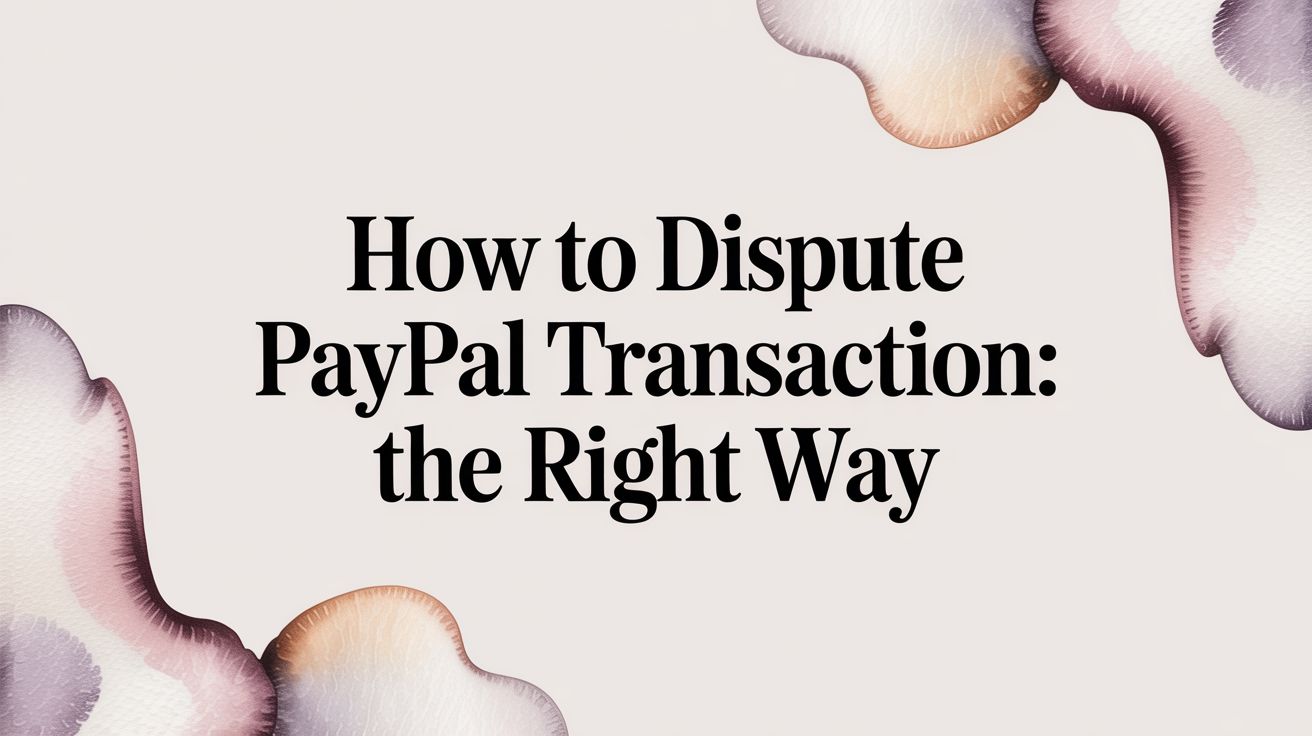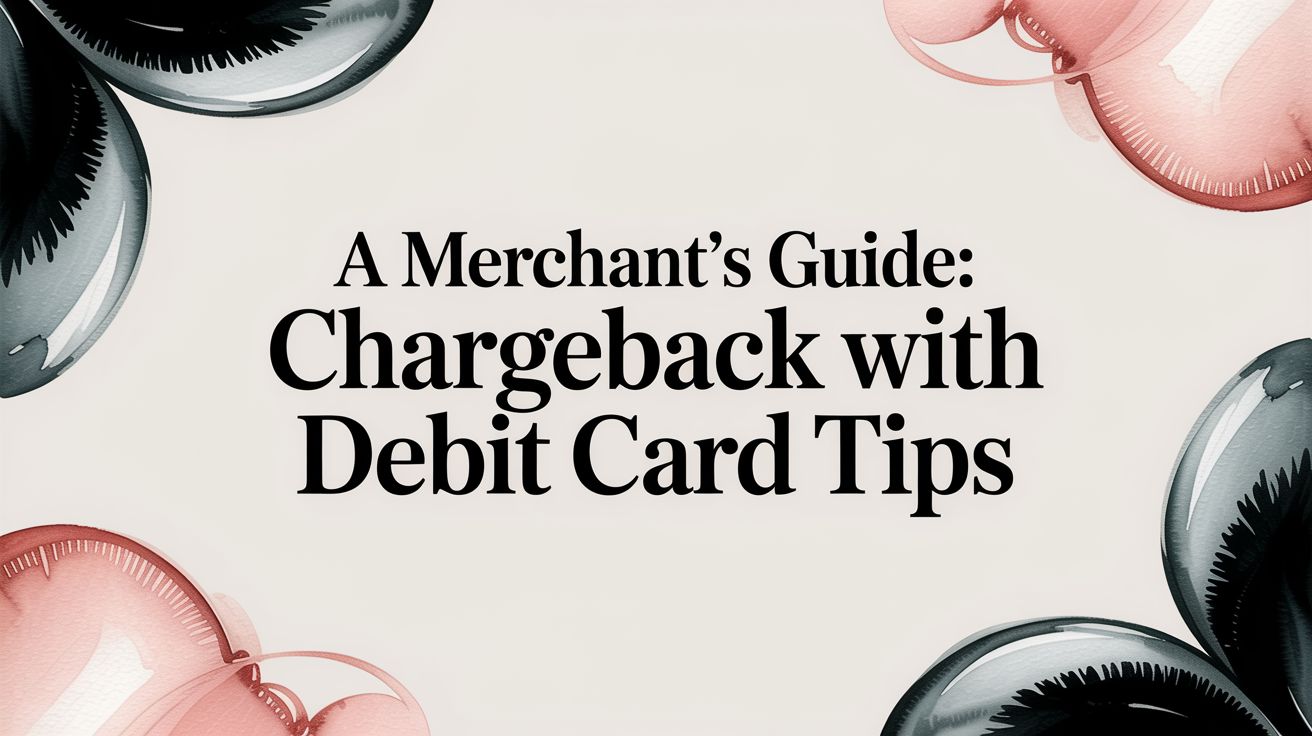
In a digital landscape where over 29 million merchants rely on PayPal for online transactions, the vulnerability to chargebacks has become a serious concern. Chargebacks, initiated by buyers for various reasons, can disrupt the seamless flow of business and impact revenue significantly.
The growing complexity of chargeback processes poses a challenge for both buyers and sellers, necessitating a robust strategy for dispute resolution. Identifying the root causes and implementing effective solutions is crucial to maintaining the integrity of online transactions.
Here, we get into the intricacies of PayPal chargebacks, offering insights, tips, and industry-leading solutions to empower businesses in managing and winning chargeback disputes.
Understanding the problem and adopting proactive measures is the first step towards a more secure and resilient online commerce experience.
What is PayPal Chargeback Dispute and Its Process?
PayPal chargeback disputes happen when a buyer raises concerns about a transaction, seeking a refund. This process is designed to protect consumers, but sellers need to comprehend how it works.
What is a PayPal Chargeback?
A PayPal chargeback is a customer-initiated dispute where the buyer questions a transaction, often citing issues like unauthorized purchases or dissatisfaction with the received goods or services.
The Chargeback Process:
The process is quite simple to understand and they are as follows:
1. Buyer Raises Concern
A buyer identifies a problem with a transaction and contacts PayPal to dispute the charge.
2. PayPal Investigation
PayPal initiates an investigation to assess the validity of the buyer's claim. This involves reviewing transaction details and communication between the buyer and seller.
3. Seller Response
The seller is allowed to respond to the dispute. Clear and timely communication is crucial in this step.
4. Resolution Decision
PayPal makes a decision based on the evidence provided by both parties. The outcome can result in either a refund to the buyer or a denial of the dispute.
Key Takeaways
- Buyers can initiate chargebacks for various reasons, ranging from unauthorized transactions to dissatisfaction.
- Sellers play a vital role in the resolution process by responding promptly and providing necessary evidence.
- PayPal investigates the dispute thoroughly before making a final decision.
Understanding the basics of PayPal chargeback disputes is crucial for both buyers and sellers to navigate the process effectively. In the next sections, we'll delve deeper into strategies for preventing chargebacks and managing them when they arise.
Top 6 Tips for Winning PayPal Chargeback Disputes
Successfully navigating PayPal chargeback disputes requires a proactive approach and a thorough understanding of the process.
Here are six comprehensive tips designed to empower sellers and enhance their chances of winning chargeback disputes:
Tip 1: Maintain Accurate Records
Keep meticulous records of all transactions, including order details, communication with the buyer, and any additional documentation. These records serve as evidence during a dispute and strengthen your case.
Additional Insight:
- Document all communication with the buyer, including emails, invoices, and order confirmations.
- Take screenshots of product descriptions, terms of service, and any relevant policies.
- Store records securely and organize them chronologically for quick retrieval.
Tip 2: Use a Clear and Descriptive Business Descriptor
Ensure that your business descriptor is easily recognizable on customers' billing statements. A clear and accurate descriptor helps buyers identify transactions, reducing the likelihood of confusion and dispute.
Additional Insight:
- Ensure that your business name on customers' statements aligns with their purchase experience.
- Include a customer support contact in descriptors to facilitate direct communication.
- Regularly review and update descriptors to reflect changes in your business.
Tip 3: Provide Excellent Customer Service
Offering exceptional customer service can prevent disputes and build trust. Respond promptly to buyer inquiries, address concerns professionally, and strive to resolve issues before they escalate to a chargeback.
Additional Insight:
- Set clear expectations for shipping times, product quality, and return policies.
- Respond promptly to customer inquiries and address concerns with empathy and professionalism.
- Consider implementing a hassle-free return process to avoid disputes.
Tip 4: Use Tracking and Delivery Confirmation
For physical goods, use reliable shipping methods that provide tracking and delivery confirmation. This documentation serves as proof that the product reached the buyer, making it more challenging for them to dispute the transaction.
Additional Insight:
- Opt for shipping services that offer real-time tracking and delivery confirmation.
- Provide buyers with tracking information as soon as the order is shipped.
- Retain proof of shipment, including tracking numbers and delivery receipts.
Tip 5: Dispute Chargebacks Promptly
Act swiftly when notified of a chargeback. Respond to the dispute through the PayPal Resolution Center within the specified timeframe. Timely responses demonstrate your commitment to resolving the issue.
Additional Insight:
- Regularly monitor your PayPal account for chargeback notifications.
- Respond within the specified timeframe, providing clear and concise information.
- Use the PayPal Resolution Center to upload documents and evidence supporting your case.
Tip 6: Know PayPal's Seller Protection Policies
Familiarize yourself with PayPal's Seller Protection policies. Understand the transactions eligible for protection and the specific criteria. Adhering to these policies can enhance your chances of being covered in case of a dispute.
Additional Insight:
- Familiarize yourself with the specific types of transactions covered by Seller Protection.
- Understand the eligibility criteria, including delivery requirements and acceptable proof.
- Stay informed about any updates or changes to PayPal's Seller Protection policies.
Implementing these tips not only strengthens your position during a chargeback dispute but also contributes to a positive customer experience. Proactive measures and attention to detail can make a significant difference in protecting your business on PayPal.
Common Seller Mistakes to Avoid Chargebacks
Preventing chargebacks on PayPal involves not only knowing what to do but also understanding what to avoid.
Here are common seller mistakes to steer clear of to minimize the risk of chargebacks:
Mistake 1: Inadequate Product Descriptions
Avoid: Providing unclear or inaccurate product descriptions that may lead to buyer dissatisfaction.
Solution: Clearly outline product details, specifications, and any potential limitations. Include high-quality images to give buyers a realistic expectation of the product.
Mistake 2: Poor Customer Communication
Avoid: Ignoring or responding inadequately to customer inquiries and concerns.
Solution: Prioritize timely and professional communication. Address customer queries promptly and work towards resolving issues amicably before they escalate to a chargeback.
Mistake 3: Neglecting to Update Business Descriptors
Avoid: Failing to update your business descriptor, leading to confusion for buyers when reviewing their statements.
Solution: Regularly review and update your business descriptor to align with your current business name and operations. Ensure that customers can easily recognize transactions.
Mistake 4: Delayed Shipping and Poor Tracking
Avoid: Shipping products late or failing to provide tracking information.
Solution: Set clear expectations for shipping times. Use reliable shipping methods that offer tracking and share tracking details with buyers promptly.
Mistake 5: Ignoring Chargeback Notifications
Avoid: Neglecting chargeback notifications or responding late.
Solution: Monitor your PayPal account regularly for chargeback alerts. Respond within the specified timeframe through the PayPal Resolution Center with clear and relevant information.
Mistake 6: Disregarding PayPal's Seller Protection Policies
Avoid: Not understanding or adhering to PayPal's Seller Protection policies.
Solution: Familiarize yourself with the specific transactions covered by Seller Protection. Ensure that your business practices align with PayPal's eligibility criteria for protection.
Mistake 7: Lack of Transparent Refund Policies
Avoid: Having unclear or restrictive refund policies.
Solution: Communicate your refund and return policies to buyers. Make the process transparent, reducing the likelihood of dissatisfaction leading to chargebacks.
Mistake 8: Insufficient Transaction Documentation
Avoid: Failing to maintain thorough records of transactions.
Solution: Keep detailed records of all transactions, including order confirmations, shipping details, and customer communication. This documentation is crucial when responding to chargeback disputes.
Mistake 9: Overlooking Fraud Prevention Measures
Avoid: Neglecting to implement measures to prevent fraud.
Solution: Use security features like address verification and card verification codes. Regularly review transactions for any suspicious activity.
Mistake 10: Ignoring Customer Feedback
Avoid: Disregarding customer feedback, whether positive or negative.
Solution: Pay attention to customer reviews and feedback. Address any patterns of dissatisfaction to improve your products or services.
By avoiding these common mistakes, sellers can significantly reduce the likelihood of chargebacks and create a more positive buying experience for customers on PayPal.
Manage and Win PayPal Chargeback Disputes
Managing PayPal chargeback disputes can be challenging, but with ChargePay, the process becomes not only manageable but also highly successful. ChargePay introduces cutting-edge AI technology to automate and enhance your chargeback defense strategy.
ChargePay revolutionizes chargeback management by offering an automated, hands-free solution to contest and win disputes effortlessly. With instant AI chargeback defense, businesses can respond to disputes in real time, boosting win rates without manual effort.
ChargePay helps businesses win up to 3.5 times more disputes and seamlessly integrates with major platforms like Shopify Payment, PayPal, and Stripe. Recovering over 80% of lost revenue, ChargePay eliminates fraud by identifying and managing fraudulent chargebacks automatically.
Its credibility-boosting features and industry-specific solutions, from eCommerce to travel, make ChargePay the go-to choice. The automated process, rated as the #1 solution, ensures hassle-free chargeback management.
Safeguard your revenue with ChargePay and experience a more secure and prosperous future for your business. Request a demo today to learn more about its AI-powered solutions for transforming your chargeback management strategy.






.svg)







.svg)
.svg)
.svg)